Day 22: Frictions
Wrapping around a bent leg is the basis of creating a frog tie. From there, various frictions can be used to lock the wraps into place. Flexibility will increase as someone relaxes into this position. It is important to bring the heel as close as possible to the tight in the first place, otherwise the tie will loosen up with movement.
Safety For All
Even if the frog tie on the leg is generally considered as safe, there are still risks of injury that we can mitigate.
- Be mindful of pre-existing knee injuries, bending the knee for an extended period of time can exacerbate existing problems.
- Everyone has a different level of flexibility, respect the body’s limit in how far it can bend.
- The front of the tibia bone may have some spots where pressure is more painful than others, communicate with your partner to adapt the rope placement.
- If the tie restricts blood flow in a significant way, slowly remove pressure when untying so the blood flow returns progressively.
- The lateral cutaneous nerve and the peroneal nerve can be damaged with extended pressure causing a numb patch. Monitor sensation on the leg when tying and be mindful of the amount of time spent in this tie. Check out Day 51 for more information on this topic.
Spiral Frog Tie
Using a spiral structure is a fast and aesthetic way to create a frog tie. Start with a single column tie around the ankle and continue wrapping the leg in a spiral form. Then you can secure the wraps with frictions (Day 2). For more solidity, try using more complex frictions like the crossing hitches (Day 10).
Practice Time!
Create a frog tie by wrapping rope around a bent leg and use different frictions to make it solid.
Self-evaluation checklist:
- Are there any painful sensations? In particular from overextension at the knee or on the front of the tibia bone.
- Is the leg fully bent, can the leg still move at the knee?
- Frictions are tight and compact with no undesired twists
- Tension is even across the tie.
- Move the leg around, does the tie stay in place?
- Pull the stem in different directions; how does it hold?
- How is the blood circulation? Look out for signs of numbness.
Exploration ideas:
- Vary the number of wraps.
- Vary the distance between the wraps.
- Try different frictions: loop around, crossing hitches, inverted crossing hitch etc.
- How close to the hip can you tie?
- How close to the knee can you get before things start to fall apart?
- What are the most comfortable spots?
- What is the difference between wrapping clockwise or the opposite? How does it change the pressure on the front of the tibia?
- Can you create a stem on both sides? How can this be useful?
Being Tied: Futomomos for Inflexible and Fragile Knees – sansblague
Futomomos are often portrayed more or less as a heel-to-butt position. If you have no problems folding your leg in an angle that is less than 90°, you can be tied in a futomomo. But the wider the angle, the easier the ropes slip off – and especially if your range of movement increases progressively during the tying, which is common. To lock a fairly open leg angle, you can find an object, such as a piece of cloth or even a rope bundle, and stuff it in the space where your calf meets your thigh. If the object is harder, like a rope bundle, the discomfort will be part of what keeps your leg in the preferred position. If the object is softer, like cloth, you will have to make it dense enough to hold your leg in place, and not compress as your flexibility increases. This kind of stop can also protect you from bending your knee too intensely if you have recommendations from a doctor to take it easy.
Inspirations and Resources
- Patello-Femoral Syndrome (Chondromalacia) from Floorwork Futomomo by _Estella
- Futomomo (Fat Leg) by MonkeyFetish
- Futomomo for Beginners by Shibari Elements
- The Futomomo and Mermaid Self Ties by Rory’s Brainworks
- Futomomo tutorial (inc crossing knot exercise) by mrluckiesrope
- How to tie Shibari: Futomomo self-tie by Patrick Shibari
- Futomomo shibari. Leg tie! By Voudou Ropes
- Basic Futomomo by Anatomie Studio
- How to tie a futomomo by Haven Kink
- Futomomo Tutorial by Bondage Tuition
- Fast and easy futomomo tutorial by mrluckiesrope
- SpiralFutomomo by Innovative Fiber Arts
- Tutorial Futomomo Spiral by A Corda Shibari
Credit: M/R: Ebi McKnotty P: AlexK7
Or return to Frog Ties for more options.

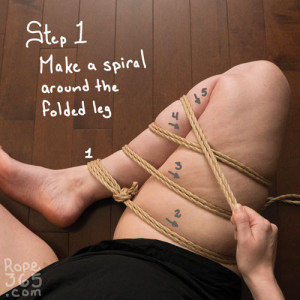
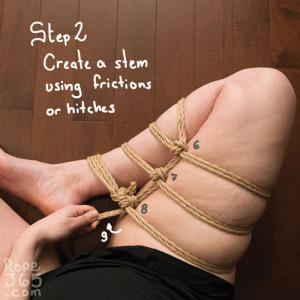
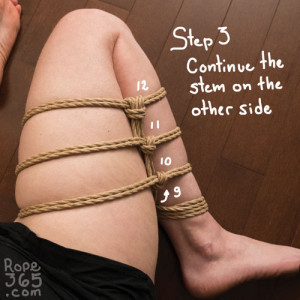
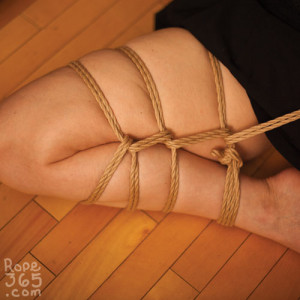
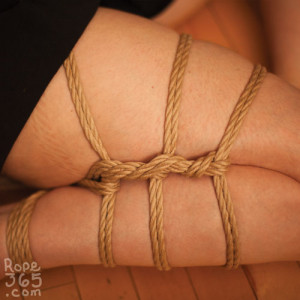
Leave a Reply